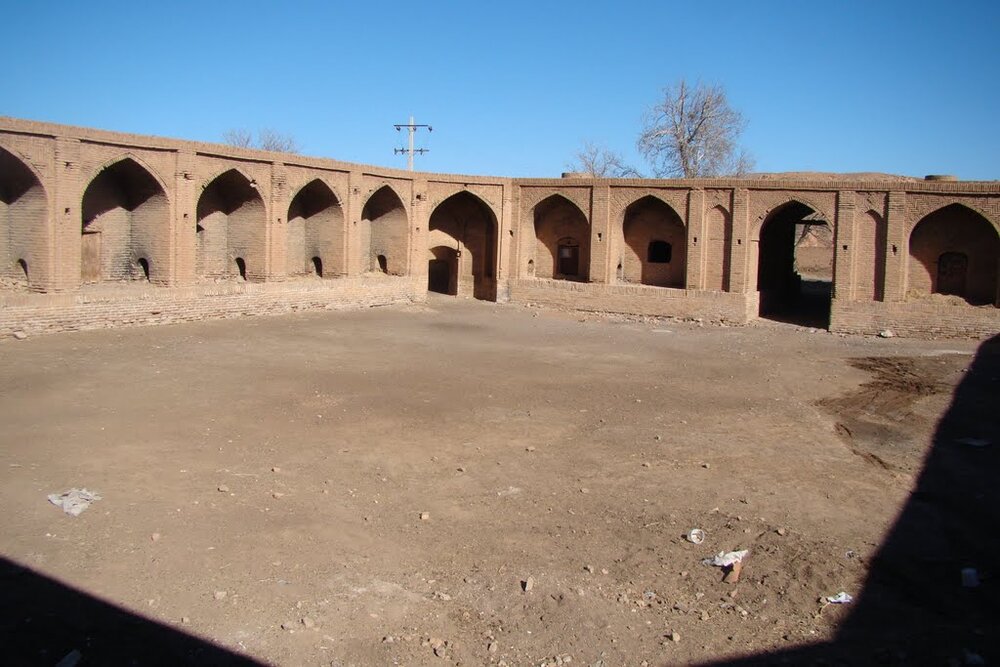Qajar-era caravanserais in northeast Iran to turn into tourism complexes

TEHRAN- Two Qajar-era (1789–1925) caravanserais in Sharif Abad village near Mashhad, northeastern Khorasan Razavi province, are being revived and restored in a bid to turn into tourism complexes, the provincial tourism chief has announced.
The restoration project of Nezam al-Doleh and Es’haqkhani caravanserais, which have been ceded to the private sector, involves repairing walls and rooftops, landscaping, and flooring, Abolfazl Mokaramifar announced on Saturday.
Built in 1806, Es’haqkhani caravanserai was used as a Chapar Khaneh, an old Persian term used for postal service, with a large courtyard and an indoor winter space.
The historical structure was built using the materials of a Safavid-era (1501–1736) caravanserai and has been inscribed on the National Heritage list.
Nezam al-Doleh caravanserai was built in 1875 with a rectangular plan, four circular towers in the corners, and two semi-cylindrical towers between the two sides.
The historical monument has 22 rooms, a very large courtyard, and two octagonal spaces, which were used as horse stables.
Located on the Silk Road, both caravanserais were very prosperous during their heyday.
Iran’s earliest caravanserais were built during the Achaemenid era (550 -330 BC). Centuries later, when Shah Abbas I assumed power from 1588 – to 1629; he ordered the construction of network caravanserais across the country.
Such roadside inns were originally built in various epochs along ancient caravan routes in the Muslim world to shelter people, their goods, and animals. The former Silk Roads may be the most famous example dotted by caravanserais.
For many travelers to Iran, staying in or even visiting a centuries-old caravanserai can be a wide experience as they have an opportunity to feel the past, a time travel back into a forgotten age.
ABU/MG
Leave a Comment